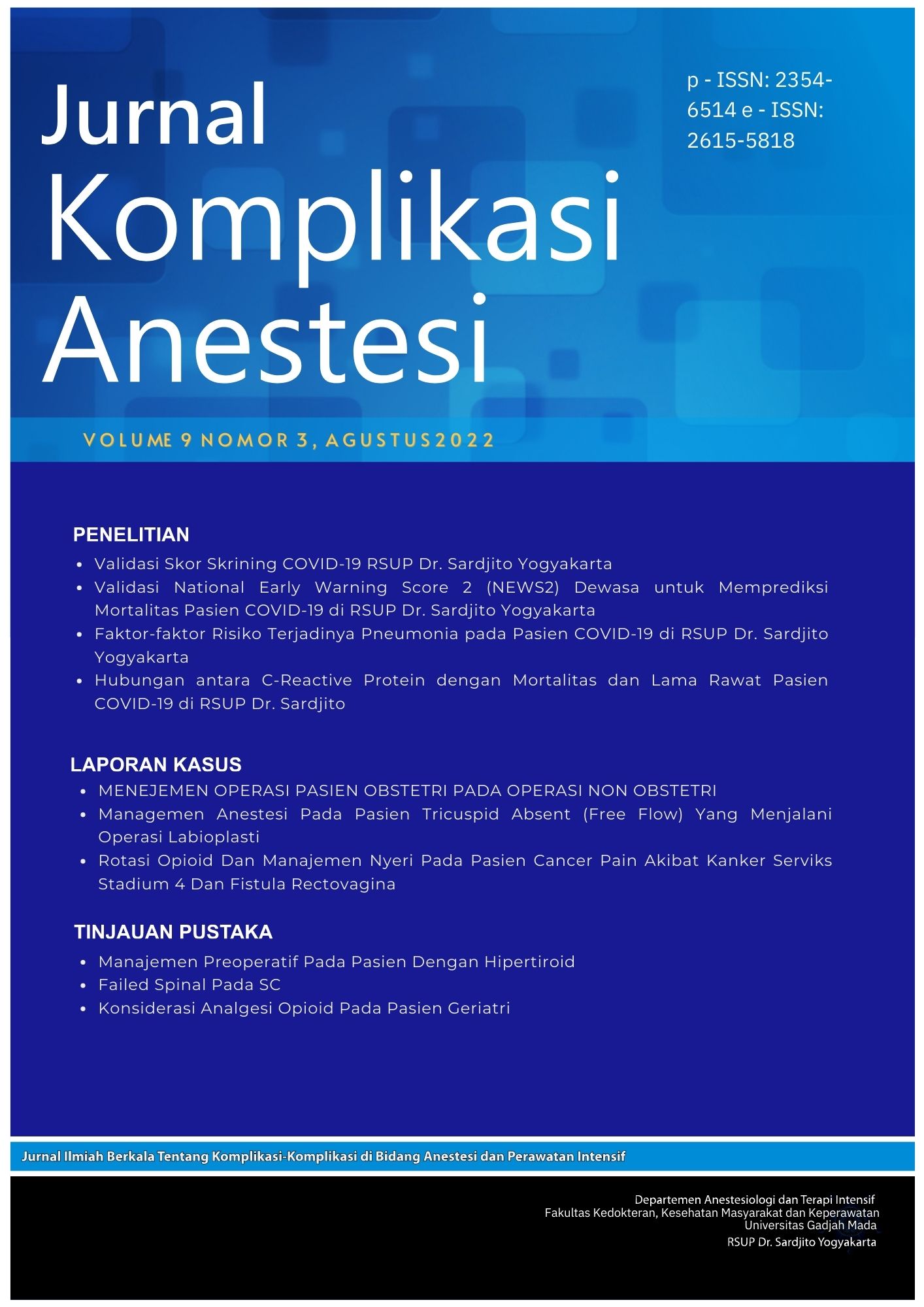Manajemen Anestesi pada Pasien Tricuspid Absent (Free Flow) yang Menjalani Operasi Labioplasti
Abstract
Approximately 750,000-1,000,000 pediatric and adult patients with congenital heart disease undergo non-cardiac surgery. This requires anesthetic manajement that will adapt to the congenital heart disease defect, the degree of cardiopulmonary abnormalities and the type of surgical procedure planned and postoperative analgesic management. Male aged 10 months with the diagnosis as physical status ASA 3 with Absent Tricuspid Valve, Small ASD secundum, Mild PS valvar planned for labioplasty. The patient was anesthetized with GA Intubation with ETT no 3.0 cuff semiclose control breath system with analgesic fentanyl 120 mcg, induction with propofol 15 mg, Sevoflurane dial 2.5%, followed by muscle relaxant atracurium 3.5 mg. The patient was admitted to the Pediatric Intensive Care Unit postoperatively, treated for 5 days and transferred to the ward on the 6th day conscious. Pre-anesthesia assessment, stages of anesthesia procedures to postoperative monitoring of labioplasty patients with tricuspid absent require special management to reduce patient mortality and morbidity during and after surgery.ward.
Copyright (c) 2022 Ratih Kumala Fajar, Calcarina Fitriani Retno Wisudarti, Wandito Gayuh Utomo

This work is licensed under a Creative Commons Attribution-NonCommercial-ShareAlike 4.0 International License.
The Contributor and the company/institution agree that all copies of the Final Published
Version or any part thereof distributed or posted by them in print or electronic format as permitted herein will include the notice of copyright as stipulated in the Journal and a full citation to the Journal.

















